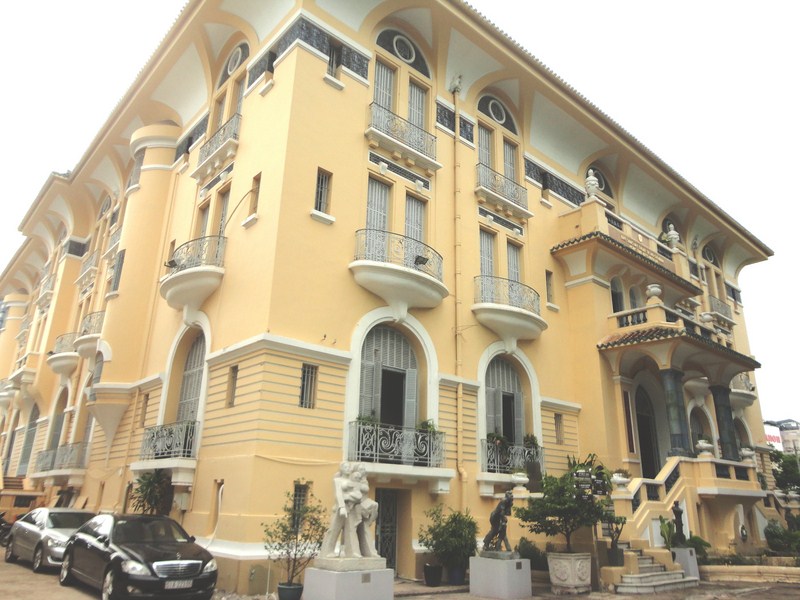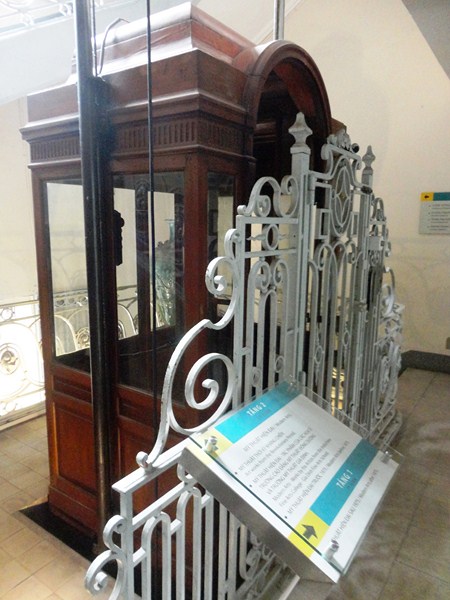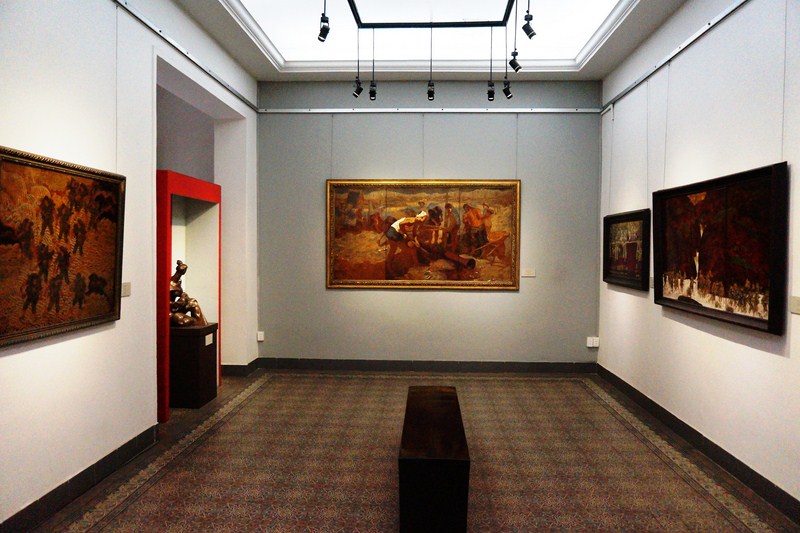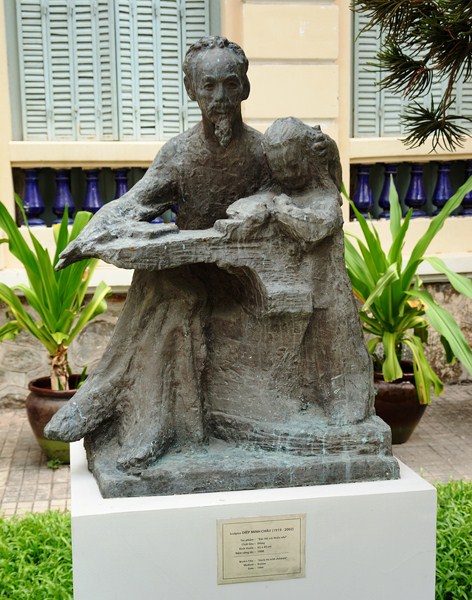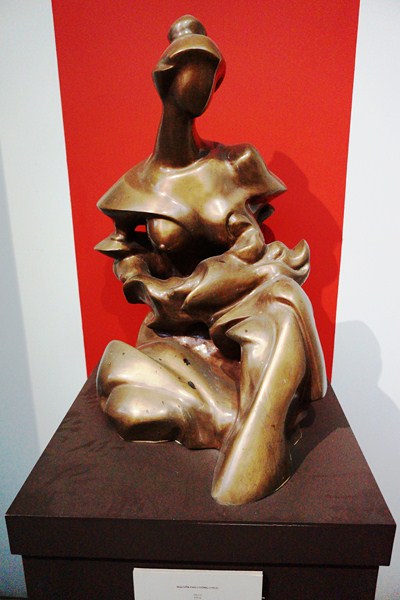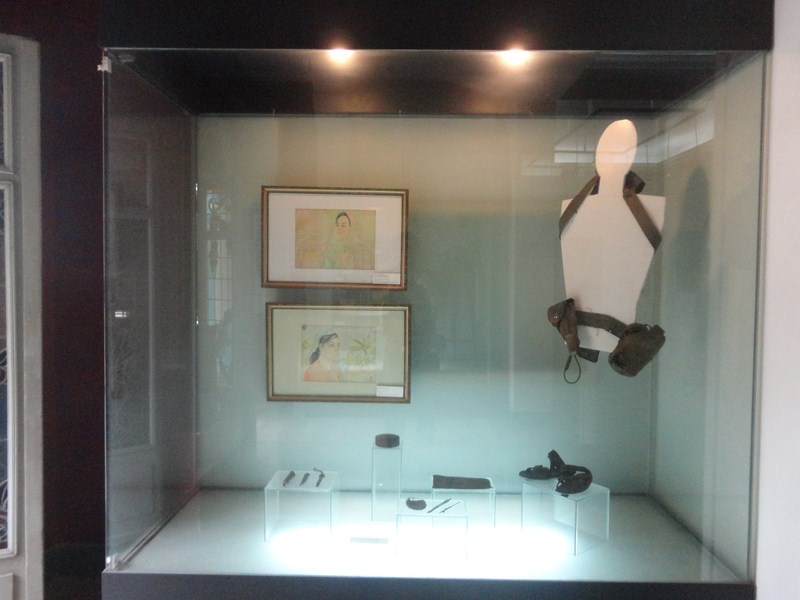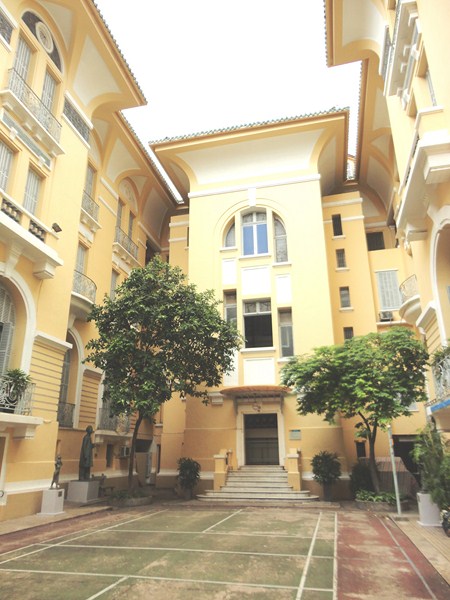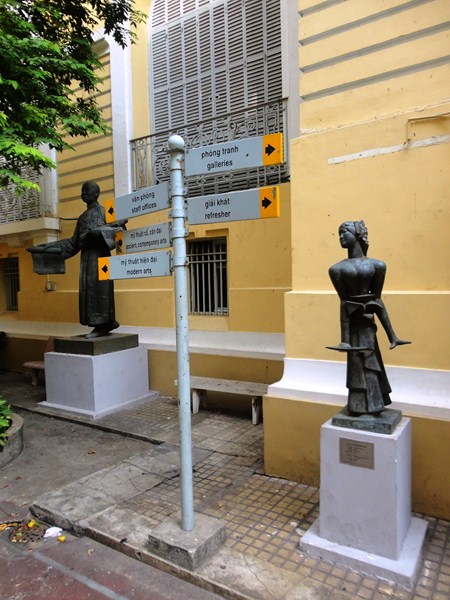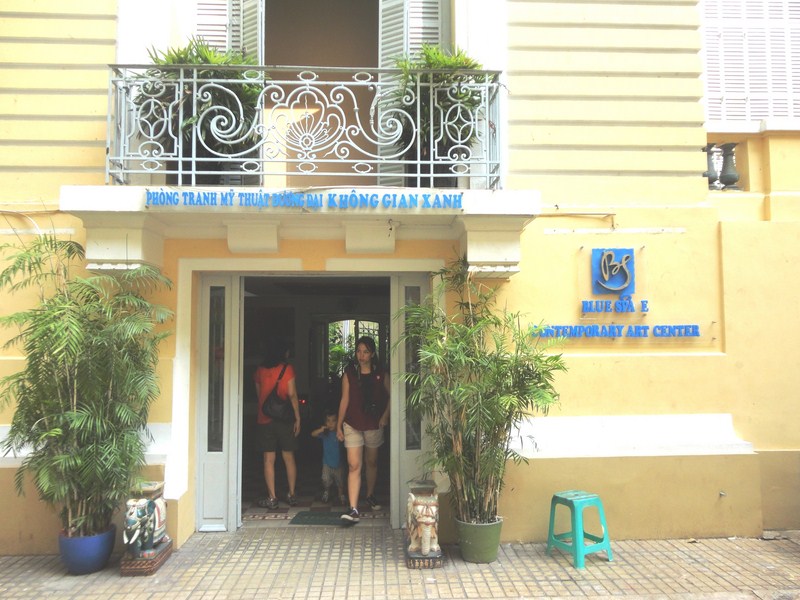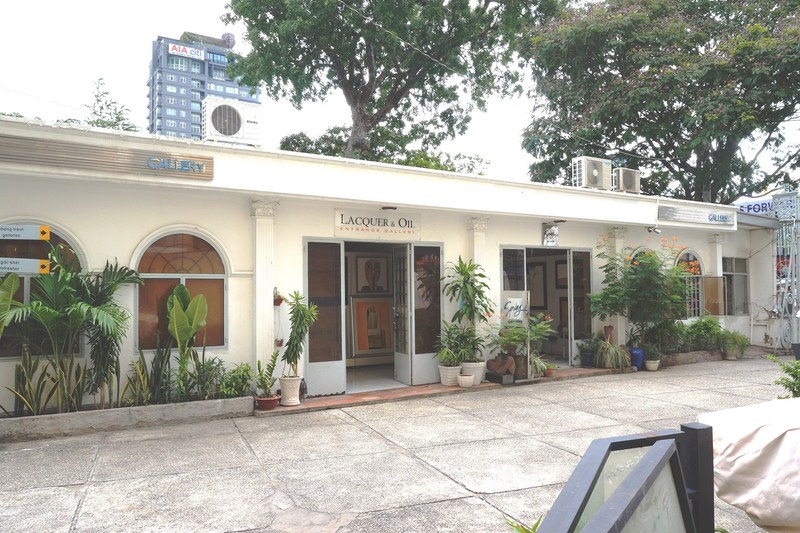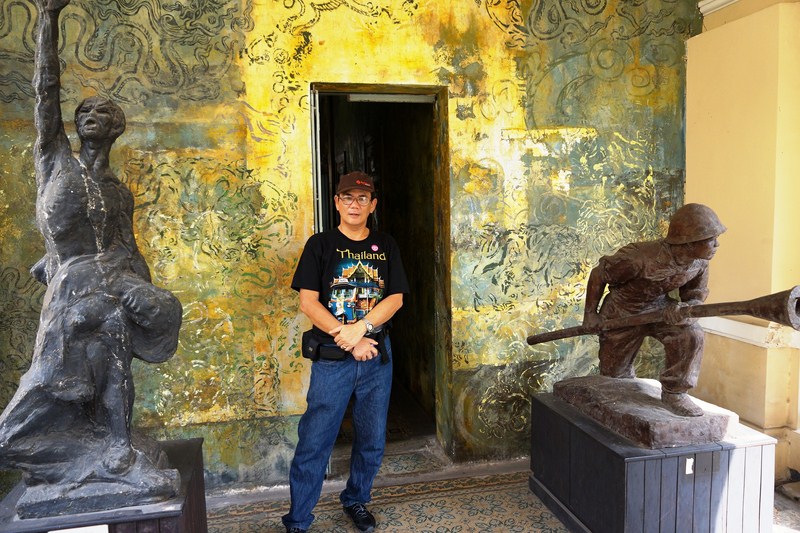On our third day in Ho Chi Minh City, we decided, for a change, to sample Vietnamese art and culture by visiting the HCMC Museum of Fine Arts, the major art museum of Ho Chi Minh City and the second largest in the country after the Vietnam National Museum of Fine Arts in Hanoi.
Originally the classic and elegant, mansion of the Chinese-born businessman Mr. Jean Baptiste Hua Bon Hoa (1845-1901), the wealthiest man of Saigon at the time (he owned the famous Majestic Hotel and Tu Du Hospital), was built between 1929 and 1934 as the Saigon headquarters of the Société Immobilière Hui Bon Hoa. On September 5, 1987, the 3-storey building was reformed into a museum, as the result of a decision of the City’s People’s Committee. However, it was not officially opened until 1991.
The museum houses contemporary Vietnamese art works (much of it, unsurprisingly, focusing on resistance to colonial rulers) on sculpture, oil, silk painting and lacquer painting, as well as traditional styles including woodcut paintings in the Hàng Trống, Đông Hồ, and Kim Hoàng styles; Vietnamese ceramics; a collection of ancient Buddhist art and historical pieces dating back to the 4th century, including elegant Funan-era sculptures of Vishnu, the Buddha and other revered figures (carved in both wood and stone), and Cham art dating from the 7th to 14th century.
One room is devoted to a collection of totem-like funeral sculptures from the Hill Tribes of the Central Highlands. The museum focuses on collecting, keeping, preserving and displaying fine artworks typical of Vietnamese people, especially Ho Chi Minh City and the South.
Even before entering the museum, we already admired statuary scattered around the grounds. We entered a huge hall with beautiful, exuberantly tiled floor, some fine (albeit deteriorated) stained glass and one of Saigon’s oldest wooden lifts. Though not airconditioned, the museum had airy corridors and breezy verandas. Hung from the walls is an impressive selection of art, including thoughtful pieces from the modern period.
It comprises three floors of exhibition space. The first floor features a changing exhibit of contemporary domestic and international art while the second floor exhibits both contemporary oil paintings, sketches, lacquerware and sculptures of leading Vietnamese (Thái Hà, Quách Phong, Nguyễn Sáng, Hoàng Trầm, Tú Duyên, Nguyễn Thanh Châu, Trần Văn Lắm, Nguyễn Hải, Dũng Tiến, Phan Mai Trực, Hồ Hữu Thủ, Nguyễn Trung, Trịnh Cung, Đỗ Quang Em, Diệp Minh Châu and Nguyễn Gia Trí) and foreign artists of the last 50 years from its permanent collection.
The third floor displays an interesting collection of historic arts ranging from 7th century to early 20th century. They include Cham kingdom and earlier civilizations such as Óc Eo archaeological site in Mekong Delta and 17th-20th century decorative Vietnamese furniture.
The central courtyard in the center of the building, accessed from the rear of the building, has more statuary scattered around the grounds. We checked out a cluster of 3 small commercial galleries in the basement. One shop has a selection of lovely prints for sale (costing from around 80,000 VND) while Building No 2 hosts lesser known works and stages exhibitions. The contemporary Blue Space Contemporary Art Center, located near the entrance, is run by the museum.
The Fine Arts Museum, indispensable for those who are keen on Vietnam arts and culture, is not big and modern but its abundant collections more than make up for it. Conveniently located near the Ben Thanh Market, the massive but beautiful French villa that houses the museum, a combination of French and Chinese styles, is an attempt to meld elements of Art Deco with local decorative motifs and spatial principles.
Through its marble floors; elegant columns; wrought-iron work on its windows and balconies; Chinese-style roof tiles; and spacious, airy rooms, it brings about a typical colonial feeling. It is considered as a work of art itself by most people.
Ho Chi Minh City Museum of Fine Arts: 97 A- Pho Duc Chinh, District 1, Ho Chi Minh City, Vietnam. Tel: +84 8 3829 4441. Website: www.baotangmythuattphcm.vn. Admission: 10,000 VND (adult), 3,000 VND (child). Open Tuesdays to Sundays, 9 AM – 4:30 PM.

